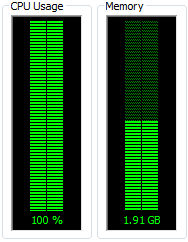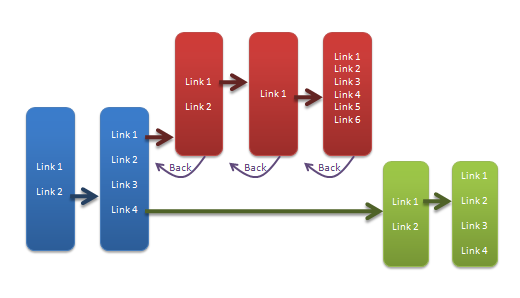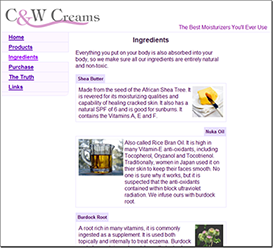Running Fast in the Background, Going Nowhere
Lately I’ve been doing quite some research on the internet which means I ended up with lots and lots and lots of simultaneously open tabs.
This has 2 serious downsides… the first one is obvious: it becomes really hard to find one tab among many.

The second one is less obvious… my browser becomes jarringly slow.

The slowness really takes over with complex sites all running lots of JavaScript tickers, Flash animations, music players, etc.
This is particularly annoying since these background tabs are, without exception, utilising my horsepower to do stuff I can’t see and consequently don’t care about.
This led me to thinking… why? Why do we allow tab processes to run in the background?
Here are the things I came up with:
- Downloads
- Uploads
- Streaming music
- Sites like GMail and RSS readers
- Intensive long running processing tasks
And you know what? Nothing I was looking at fell into one of these categories.
Background processing in tabs has only two ways to let you know anything is going on:
- By playing audio
- By changing the title of the site (and then only if the current tab is big enough to show any text).
Now I personally never want more than one tab to be playing audio at a time… so allowing all tabs to play audio seems like a bad idea from the get go.
Download, download, and download again
I’m a iPhone fan… I love the number of daily tasks I can accomplish with the small pocket wonder (more about this another time), especially the ability to read web pages whilst on the go.
However, coverage around my area is spotty at best, which means I’m often out of touch with a data signal.

This frequent disconnection throws one of the inefficiencies of the web into stark relief. Browsers always go back and re-download a page when viewing the users history… so even if I’ve visited the page just a few minutes before, if I no longer have an internet connection, I can’t view it again.
This appears to be a question of convenience… but there is another, darker, side to this throwaway approach. When I’m doing a body of work and make a note of a particularly great URL I can have zero confidence that tomorrow I will be able to return to that link and find the same content. If it is a blog it may even be that 10 minutes later the content will no longer be available at the same URL.
It seems to me that it would be much much better if browsers kept the content they downloaded in a giant cache and only fetched a new copy on user demand. In this way all the content I’ve viewed (regardless of the desires of the webmaster) would be available to me again and again.
Of course… this leads to an issue of space usage… so presumably the oldest pages would have to slowly fall out of the cache, but with today’s giant hard drives and massive flash memory I bet we could store a large chunk of our history.
This would change the approach to bookmarking also… when I bookmark a site it would (apart from getting listed in my bookmarks) be flagged as ‘not to discard’, ensuring that whenever I return to the bookmark I can still read the content I was interested in.
Finally keeping content locally would truly allow me to annotate the pages that I was viewing (think something like the comment reviewing tools in MS Word) and build a body of research on a topic that had some real value and context.
Revisionist History
Something that has driven me nuts for years is the revisionist approach to web browser histories.
When I visit a site and navigate through some links I can use the ‘back’ button to go back in time and the ‘forward’ button to come forward again. However, if I go ‘back’ and then follow a new link the entire previous future is thrown away in place of the new future. In the graphic below the ‘red’ route (top) is completely forgotten.

But what if just wanted to check a quick fact and then return to where I was? Yep… I have to go ‘back’ and then painstakingly retrace my previous steps one link at a time.
The same occurs when I open a link in a new tab… *bang* the history from the previous tab is not carried over… there is no way for me to find out how I came to have that tab open.
There is no real technical reason for this… computers are completely capable of remembering the full history (in fact it is little more than a simple tree) and also of copying it between tabs.
The ‘back’ button works well, but in my opinion the ‘forward’ button, and new link navigation behaviour is horribly broken.
The forward button should remember all the routes you have browsed and (whilst it may default to the most recent) should offer then the choice of which route to follow when going forward.
Putting it together
With those three thoughts formed it seems that they are a perfect match.

Imagine a world in which a browser stores our full history (not just the current timeline) with all the content of the pages, then when the user navigates away or changes tab also stores the current execution state of the scripts in the cache.
Suddenly our browser only has to run one set of scripts and keep one page loaded in memory at any given time. We can return at will to pages we have seen before regardless of whether we have an internet connection available, we can annotate and cross-reference pages, and we can implement a history browser that lets us see multiple navigation routes. We could even display the users history in a revision tree much like we use in version control.
Downsides
As with every idea this one is not without its downsides.
Chief among these are the lack of backward compatibility with the current browser model and plugins, but there are a bunch more:
- Site owners would see a dramatic reduction in ‘hits’.
- Advertisers would ship less ‘fresh’ adverts.
- It would require a new UI to allow certain sites to be flagged as ‘background’ tasks (e.g. streaming audio sites, gmail) which would allow processing when hidden.
- Users would probably need some kind of UI element reminding them that the content they were seeing was, possibly, not the most up-to-date content on the site.
- There would need to be a clear separation of ‘upload’ and ‘download’ activities so that these did not get suspended by tab backgrounding (although I think for the most part browsers already do this).
Conclusion
I could see this being a much nicer web experience… but sadly inertia probably means it won’t come to pass.














You must be logged in to post a comment.